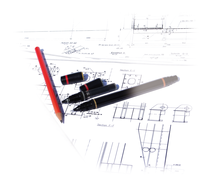Blueprint
Using LaTeX and the TikZ package, you can create high-quality vector graphics to improve your documents by making them more visually appealing.

Lusi, freeimages.com
Using LaTeX and the TikZ package, you can create high-quality vector graphics to improve your documents by making them more visually appealing.
LaTeX is not used just to produce unsightly, gray text boxes. With the right packages, you can add color [1] to your pages and integrate external graphics on demand [2].
The TikZ [3] package lets you create vector graphics from within LaTeX. The package is based on the PGF package and simplifies its use. With TikZ, you can create high-quality illustrations with a few lines of code that you can easily integrate into a LaTeX document. However, you do have the disadvantage of not being able to immediately see what the graphic looks like: Every change requires a LaTeX run. The KTikZ [4] program helps in this regard by showing the graphic right away (Figure 1).
[...]